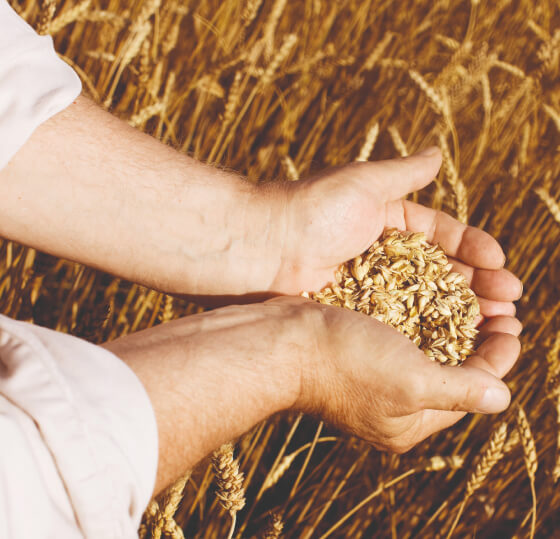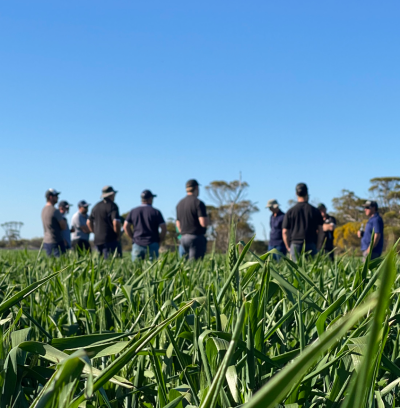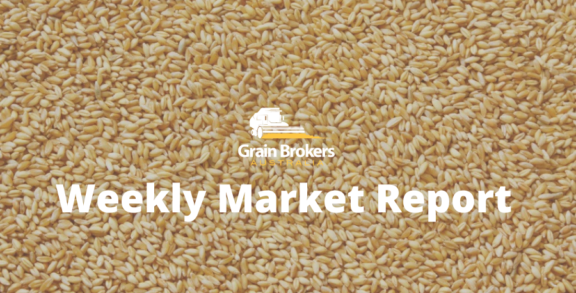
Winter cereal production in Turkiye contracted last year after drier-than-normal weather conditions during the growing season, depressed yields and limited rainfall over the past four months may again have a strong influence on winter crop yields when the new season harvest commences late in the upcoming spring.
According to the data from the Turkish State Meteorological Service, average rainfall registrations across the country from the beginning of October last year to the end of January this year were 28.4 per cent below the long-term mean (1991-2020) and down 39.6 per cent compared to the previous corresponding period.
Precipitation in the Southeastern Anatolia region, in the country’s southeast bordering Syria and Iraq and one of the country’s major winter cropping areas, has been the hardest hit. Registrations have averaged 96 millimetres for the four months, 36.8 per cent of the long-term average of 261 millimetres, and just 29.4 per cent of the 326mm that fell in the same period last season. The region’s January rainfall was 4.8mm, just 5.7 per cent of the 83.7mm long-term mean and 4.3 per cent of the January 2024 registrations. The entire region of Southeasten Anatolia has been under severe drought declaration since May of last year.
The story is only marginally better in Central Anatolia, the country’s primary wheat-producing region accounting for around 31 per cent of annual production. Rainfall in the October through January period averaged 82mm, 53 per cent of the 155mm long-term average, and down 49 per cent in the same period in 2023/24 when 160mm was recorded. January rainfall across the region averaged 12.7mm, 69.7 per cent lower than the long-term average of 41.9mm and 75 per cent lower than the first month of 2023. Drought declarations have gradually engulfed Central Anatolia over the past nine months, with the entire region under severe drought conditions by the end of January.
The Marmara, Aegean and Mediterranean regions also contribute significantly to national grain production. Over the four months to the end of January, rainfall was down 19, 16 and 29 per cent compared to the long-term mean, respectively, and 41, 19 and 27 per cent lower than the previous corresponding period. The January picture revealed decreases of 20,32, and 76 per cent against the long-term average, respectively, and 41, 28 and 76 per cent of January 2023 observations. Almost all of the Mediterranean region is also suffering under severe drought conditions.
Wheat production in Turkiye’s 2024/25 marketing year (June to May) ended up at 19 million metric tonne off a harvested area of 7.25 million hectares for an average yield of 2.62 metric tonne per hectare. In 2023/24, production was 2MMT higher at 21MMT off 7.2Mha, with the yield average 11.5 per cent higher at 2.92MT/ha.
Barley output from last year’s harvest was 7MMT, down 1MMT compared to the previous year. Last year’s harvested area was slightly higher at 3.75Mha compared to 3.7Mha in 2023, but the average yield plummeted 13.4 per cent from 2.16MT/ha in 2023 to 1.87MT/ha last year.
Cereal stocks remain higher than normal despite the production contraction, with extensive carryover inventories from the 2023/24 marketing year adding significantly to total supply. According to the United States Department of Agriculture’s Foreign Agricultural Service, wheat stocks carried into the 2024/25 marketing year were 5.3MMT, up from 4.6MMT 12 months earlier and 2.3MMT two years prior.
Domestic wheat consumption is expected to increase slightly from 19.7MMT in 2023/24 to 20MMT in the current season. This growth is seen in the stockfeed sector, rising from 1MMT to 1.3MMT, and is attributed to an increase in the supply of favourably priced feed wheat. The availability of feed wheat has grown in recent months after some of the state’s milling wheat reserves stored in underground bunkers reportedly deteriorated in quality.
In early 2023, the Turkish government announced that it would no longer sell wheat at a discount to domestic consumers. However, this policy appears to have grown in flexibility, with the government now selling reserve stocks at a discount to liquidate some of its inventories at varying values depending on outturn quality and end-use.
Imports of wheat in the first half of the 2024/25 marketing year (Jun-Nov) were 40 per cent lower year-over-year at just 1.9 MMT. This drop is directly attributed to Ankara’s decision to suspend wheat imports under the inward processing regime (IPR) from late June through to mid-October last year.
However, wheat imports are expected to accelerate in the second half of the year and are projected to reach 5MMT by the end of May. From mid-October, millers have to purchase 85 per cent of their wheat requirements from the Turkish Grain Board and are permitted to import the remaining 15 per cent of their wheat needs under the IPR. In line with recent procurement trends, Russia is expected to supply most of Turkiye’s 2024/25 wheat imports.
Exports of wheat and flour (in wheat equivalent) are forecast to retreat from 10MMT in 2023/24 to 7MMT in 2024/25. Most of Turkiye’s flour produced for export markets was processed from imported wheat. The temporary suspension of the IPR last year disrupted traditional flows. By the time it was partially renewed in October, flour exporters had lost critical market share into key markets in Africa and the Middle East, particularly Iraq.
Additionally, when the IPR was suspended, the government authorised the commercial export of milling and durum wheat. This resulted in the export of around 1MMT of durum wheat in the first half of the marketing year, but no milling wheat left the country as prices were uncompetitive. Over the same period, flour exports tumbled by more than 40 per cent to 1.2MMT (1.7MMT wheat equivalent), but the pace is expected to pick up again in the second half.
Like wheat, the barley carry-in has increased significantly in recent years. This season, it was 1.7mmt, up 83 per cent from 0.9MMT in 2023/24, which itself was 200 per cent higher than the 2022/23 carry-in of 0.3MMT. Barley consumption is forecast to remain unchanged year-on-year at 8MMT, of which 7.1MMT goes into the stockfeed sector and 0.9MMT into food, seed and industrial markets, predominantly beer production. While barley imports are minimal at just over 0.1MMT, exports in 2024/25 are forecast to jump by more than 200 per cent to 0.5MMT on the back Ankara’s strong push to liquidate excess inventories in the second half of last year.
Call your local Grain Brokers Australia representative on 1300 946 544 to discuss your grain marketing needs.
Written by Peter McMeekin.





